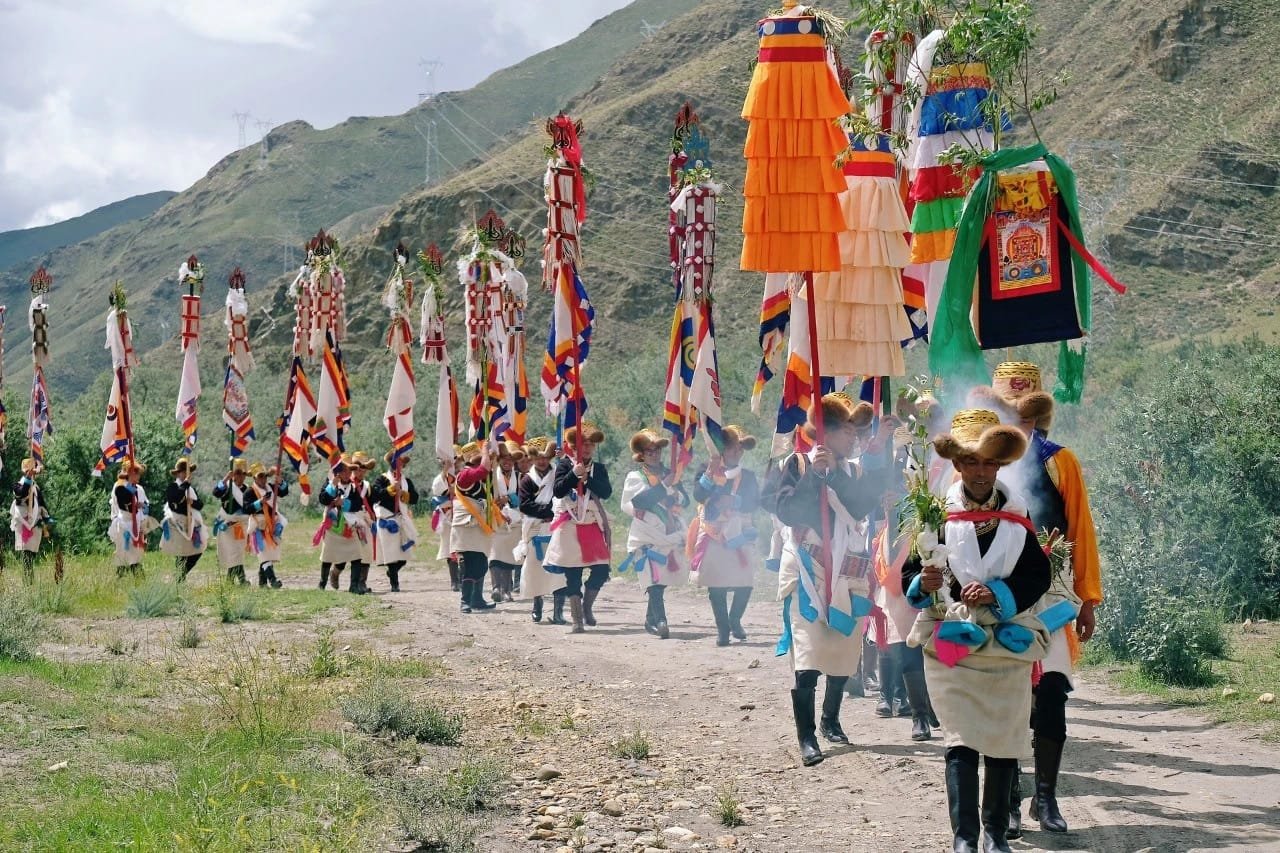The Origin of the Karnali River
The Karnali River, an essential tributary within the Ganges river system, finds its origins in a region renowned for its spiritual and geographical significance. Awash with cultural heritage, the river begins its journey from the pristine landscapes surrounding Lake Manasarovar and the majestic Mount Kailash, both situated in Western Tibet. These sacred landmarks are held in reverence not only in Tibetan Buddhism but across various religious traditions, adding a profound layer to the river’s identity. The Tibetan name for the Karnali River, Mapcha Tsangpo, translates to “red river,” a reflection of the natural mineral content that imbues its waters with a distinct hue.
The genesis of the Karnali can be traced to the southern slope of the majestic Mount Kailash, reputedly the abode of Lord Shiva, a principal deity in Hinduism. This connection establishes the river as a vital nexus not only of physical waterways but also of cultural and spiritual practices. The water from this river is believed to carry divine blessings, thereby serving as a pilgrimage route for countless devotees who journey to Lake Manasarovar and Mount Kailash for spiritual rejuvenation. These areas are synonymous with purity in many traditions, symbolizing the purity and sanctity attributed to the rivers flowing from them.
<pas a="" along="" also="" and="" as="" banks.="" carves="" communities="" crucial="" cultural="" deep="" descends="" drawing="" earth,="" ecosystems="" features="" features;="" for="" freshwater.="" from="" generations.
The Journey of the Karnali River through Nepal
The Karnali River, known locally as the “Karnali Nadi,” originates from the high Himalayas in northwestern Nepal, specifically from the Ghaghara River, which flows through remote and rugged terrain. Its journey begins at a lofty altitude of approximately 7,000 meters, surrounded by formidable peaks that contribute to its icy glacial waters. As the river originates from the high altitudes, it meanders southward, carving a path through the majestic landscapes of the Himalayan foothills.
Upon entering the lower altitudes, the Karnali River transforms dramatically, flowing through various gorges and valleys that showcase the raw beauty of the Nepali countryside. It winds through the stunning landscapes of the Dolpa and Jumla districts, where it slices through craggy terrain, creating breathtaking canyons and offering picturesque views that attract adventurers and nature enthusiasts alike. The river’s turbulent waters are a significant feature, particularly in areas like the Karnali Gorge, where the landscape is steep, and the current is strong, revealing both the challenges and the allure of navigating this part of the river.
As it continues its descent, the river passes several key towns, including Talcha and Chheri, which rely on the Karnali for their livelihoods, agriculture, and fishing. These communities thrive along its banks, highlighting the river’s immense ecological and economic importance. Various ecosystems flourish around the Karnali, from subalpine forests to diverse flora and fauna, providing habitat for numerous species. The river also supports abundant fish populations, contributing to local diets and economies. The intricate relationship between the Karnali and the surrounding communities is a testament to the river’s vital role in sustaining life and culture in this part of Nepal.
Karnali’s Role in the Ganges River System
The Karnali River, recognized as the longest river in Nepal, plays a crucial role in the greater Ganges river basin. Originating from the high peaks of the Himalayas in Tibet, it traverses a diverse range of geographical landscapes, creating a complex system of waterways. The river stretches approximately 507 kilometers across Nepal before crossing into India. Upon entering India, the Karnali merges with the Ghaghara River, which is one of the key tributaries of the Ganges. This connection is significant, as it marks the confluence of multiple water sources contributing to the hydrology of northern India.
The river’s flow throughout its course is influenced by the seasonal monsoons, which provide a vital source of water. In addition to serving as a main drainage pathway for the region, the Karnali River significantly contributes to the sediment load of the Ganges. This sediment not only enriches the river’s ecosystem but also affects agricultural practices in the surrounding areas, making the Karnali not just a waterway but a lifeline for the communities dependent on its resources.
The interconnections between the Karnali and its tributaries underscore the intricate hydrological relationship within the Ganges river system. For instance, several smaller tributaries flowing from the Tibetan plateau swell the Karnali’s waters and contribute to its overall volume, emphasizing the river’s importance for both ecological balance and human livelihoods. Furthermore, as part of the world’s largest river system, the impact of the Karnali extends far beyond its immediate vicinity, impacting water availability and management strategies across regions of India. Thus, understanding the Karnali’s role within the Ganges River system is essential for comprehending the complex dynamics of water resources in South Asia.
Tibet’s Influence on Major River Systems
Tibet, often referred to as the “Roof of the World,” is a crucial geographical region that influences several major river systems in Asia, including that of the Ganges River. While the Ganges itself does not have its origin in Tibet, the significance of its tributaries cannot be understated. Notably, rivers such as the Karnali, Arun, and Subansiri begin their journey in the Tibetan highlands, flowing southward into South Asia and contributing to the Ganges ecosystem.
The Karnali River, for instance, has its sources high in the Tibetan plateau, where it emerges from glacial meltwater. This melting provides essential freshwater that not only supports the river’s flow but also nourishes the surrounding ecosystems and communities reliant on it. As the Karnali descends through the rugged terrains of Nepal, it joins the Ganges system, showcasing the interconnected nature of these riverine pathways. The river’s journey is emblematic of the relationship between Tibet’s diverse geography and the hydrological cycles affecting South Asia.
Moreover, Tibetan rivers serve a dual role as vital lifelines for the communities dependent on them and as significant contributors to the larger river systems they eventually feed into. The waters exported from the Tibetan plateau ensure that agricultural areas downstream, particularly in the Ganges basin, maintain their productivity and ecological health. Thus, it is essential to recognize that the preservation of Tibetan watersheds not only protects local environments but also sustains millions of lives far beyond Tibet’s borders.
The influence of Tibet on the Ganges and its tributaries highlights the necessity for careful stewardship of these water resources. Environmental changes, deforestation, and climate shifts pose risks to these rivers and their ecosystems. Therefore, collaborative efforts to secure and protect these sources are vital for the sustainable future of river systems that are integral to the livelihoods and cultures of the peoples they support.




